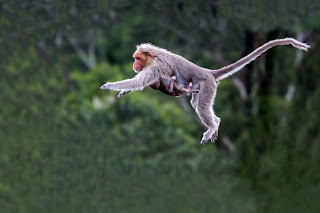SEASONAL THOUGHTS:
A
CHRISTMAS IN SUMMER
BY P S SUNDAR
Having witnessed Christmas season in many European
countries over the years, I had a different experience of Christmas season in
Australia and Fiji Island this month.
For one, in Europe and most countries elsewhere,
Christmas season means peak winter and some in snowy conditions. In Australia and Fiji, it is peak summer
now. I saw sun setting at 8.30 pm and
rising at 5.30 am in Sydney. The day
temperature rose to 41 degrees Celsius with television channels screaming that
it was historically high heat. Clearly,
it is Christmas in summer.
In Sydney, Christmas celebrations began on November
26 – a month ahead of Christmas – and will go into the New Year. All over Australia, educational institutions
are closed from November till February 2016.
Christmas business is peaking and students are seen working in such
business houses to earn some money during their vacation. This is more so for Indian students who
prefer to remain there rather than spend on travelling to home. I saw Indian postgraduate students (boys and
girls) and PhD scholars working as waiters in Indian restaurants like Saravana
Bhavan and local Taj. “Usually, I do
part-time work but now being Christmas vacation, I am doing full-time work”,
Tinju a post-graduate student from Kerala, told me.
Christmas mood has been set in at Sydney with the
icon Christmas Tree at Martin Place where people share their Christmas messages. So too the ‘Christmas Green’ at Hyde Park. I saw volunteers sweating in the scorching
sun in Sydney’s Opera House surroundings creating pavilions for Christmas
concerts. The very enjoyable ferry ride
from the jetty near Parramatta to Circular Quay via underneath ANZAC Bridge and
Darling Harbour Bridge gave me a feel of Christmas season with decorations on
many buildings on river bank.
And at Circular Quay, a walk took me to Christmas
Village Bizarre with street musicians and magicians in operation. Further down, the Opera House surroundings
stood testimony to Sydney’s determination to provide among the best Christmas
attractions this year as I saw pavilions being erected to present music, fun
and frolic. The 200 years memorial at
Royal Botanical Gardens also echoed Christmas sentiments.
“Every year, with my friends, we see Christmas and
New Year world-class fireworks display at Sydney”, R Subramanian, an engineer
in Goulbourn near Canberra said.
“Sydney never fails to impress. Some highlights now include the
world-renowned fireworks of Sydney’s New Year Eve and Sydney Festival”, says
Australian Tourism Minister Stuart Ayres.
The Melbourne city has made it free travel in public
transport. I saw Christmas decorations
all over the streets in Bourke’s, Lonsdale, Collins, Swanston, Elizabeth etc
surrounding The Eureka Skydec. Restaurants are busy attracting visitors with
Christmas specials. So too are textile shops
where sale with discounts happens. Gifts shops and Santa Claus are everywhere. There are many Christmas markets in the
side-streets. The youth are spending
many hours in the streets, eating, strolling, expressing love and fraternity. Being summer, the youth are in their minimal
possible dress – not so much to speak of Christmas dressing !
And, in the hype of all these, there are candles,
cakes, colours, celebrations, cards, carols and countless gifts – but Church
and Christ are missing. “Once I was in
New Zealand on Dec 24 night and wanted to attend a Christmas Mass when I
discovered that Churches were closed because Priests were enjoying Christmas
party with their kith and kin elsewhere”, Rani Baliah, staying in Suva, Fiji,
told me.
“We celebrate New Year earlier than most of the
world”, Nandu Naidu living in Suva said.
2016 will don there over seven hours earlier than it does in India.
(response can also be sent to: pssundar.coonoor@gmail.com)






















.jpg)
.jpg)

